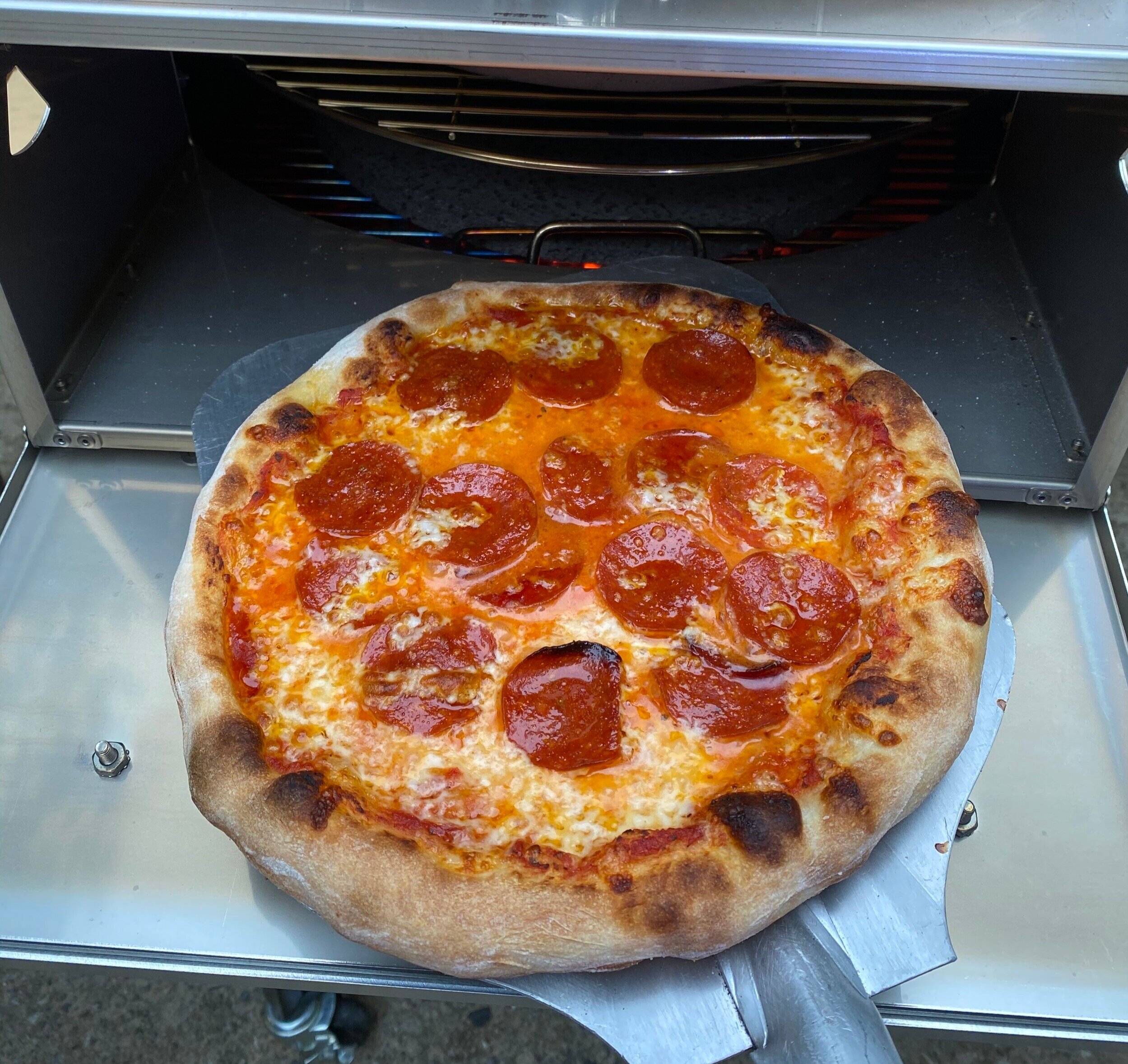Dough Recipe & Oven Temperature - Do they Need to Match?
The dough is a critical foundation to pizza
Pizza dough is one of the most amazing creations. The simple combination of flour, water, and yeast can turn into something with character and taste. Pizza dough varieties add different ingredients to this basic recipe for different reasons. Sugar, oil, diastatic malt, beer, molasses, additional yeast, and flour varieties each add specific attributes to pizza dough. Baking is a complicated chemical reaction. When the ingredients, proportion, time, and temperature are all aligned appropriately, the reaction results in show-stopping pizza. This article is focused on how temperature should be matched to the browning agents added to a dough recipe.
Unfortunately, the vast locker of all mankind’s knowledge, the internet, makes it easy to blur all of this meticulous specialization. A search for pizza dough recipes yields this:
These 179 million recipes are not created equal. Great recipes are refined for certain temperatures and ovens. Bad, click-bait recipes, are regurgitations of ingredients applied for every oven type. Look how many recipes there are for “Authentic Neapolitan Pizza” in your home oven. I will go through the various considerations for choosing the best recipe for the temperature that you are planning for your oven.
Browning Agents:
The first critical consideration for matching dough to cooking temperature is the addition of browning agents. Sugar, milk, egg, baking soda, malt, lye, and heat are each applied in proportions to change the chemical reaction of the flour and induce browning. If you took a recipe of flour-salt-water-yeast and popped it into the oven at 450°F, it will retain its pasty white looks throughout the cooking process. If you took that same recipe and cooked it in a wood-fired oven, the application of intense heat will serve to brown the crust (it will actually blister the crust giving it leopard spots). So many of the recipes passed around and published on the internet either do not specify the cooking temperature or provide bad advice due to lack of knowledge. (For example there is a widely circulated belief that sugar in the dough is the only reason that pizzas burn on the bottom in a KJ or BGE.) Obviously you need to select a recipe with ingredients that provide some browning if you are cooking below about 700°F. There are also some underlying details that you may not know that are already included in your ingredients - more about that in a minute.
Flour
You could spend months learning the finer details of flour. There is the source, what percent of the endosperm, germ, and bran are left in the flour, the bleaching process, the grind, the age, and even the conditions of the annual crop. For our purposes here, we are making pizza and bread. Pizza crust and bread need some structure, and some chew. To achieve this, we need good gluten formation to hold the bubble formation and provide that subtle toughness. Bread flour is about 12-14% protein which serves this purpose well. All Purpose flour and Cake flour have much lower protein levels and do not provide enough structure alone for pizza dough. Then there is the ultimate pizza flour, 00 (double zero) that adds another component. Our typical commercial flour in the US is ground to about a 0 fineness. In Italy a high protein bread flour was developed that is ground finer to a 00 grade. This flour is silky and smooth to the touch. Caputo and others have developed a product for their particular market of wood-fired oven bakers. These bakers are cooking at high temperatures (>700°F) so the flour is specially designed to stand up to this high heat without scorching. Meanwhile in the US, a vast number of consumers cook at 450°-500°F so a different blend is more typical. This King Arthur bag shows clearly that it contains malted barley - one of the browning agents we covered earlier.
So, King Arthur bread flour is going to brown much better at a temperature lower than 700°F. Those folks who attempt to make authentic pizza in their home by following a recipe that recommends using only the best 00 Italian flour are disappointed when the crust does not brown like their bread flour versions. One mystery solved, but wait there is more.
Hydration
Hydration is a frequent topic in bread and pizza making forums. Often it sounds like a horsepower competition to have the highest or lowest hydration - “Made this dough at an 88%”. Pizza dough ingredients are simple but proportions have a huge impact. Hydration is another aspect of a recipe with an interesting relationship to cooking temperature . If you can only reach 450°F degrees in your home oven, a pizza is going to take 12-15 minutes to cook. If you have low hydration, the water is going to evaporate off of the dough in the early portion of the cook, leaving it to cook dry. This is not dryness in the resulting crust, it is a shortage of moisture to provide steam within the crust along the way. Water is part of the magic chemistry of converting dry, white powder into a magical bubbly crust. A wood fired oven is the opposite. The pizza is only in the oven for 90 sec to 2 minutes. If the water is not utilized and disbursed through steam in this timeframe, the crust will have a disappointing spring to it. So the variable of moisture is another critical element to look out for in a recipe.
Time and Temperature
I have contrasted the extremes of a 450°F oven and a 900°F wood-fired oven cook to demonstrate how matching ingredients to temperature is critical to making great crust. The biggest takeaway is that you can cook great pizza at different temperatures as long as you match the appropriate recipe to the cooking temperature.
Now you know why it is impossible make a real Neapolitan pizza in your home oven - you can’t brown 100% 00 flour at 500°F. We have tested and published a number of dough recipes that are designed to cook in the Pizza-Porta between 550°F and 700°F. These recipes balance the browning, moisture and timing to yield restaurant quality pizza crust at home.
I am always asked what kind flour I use to make our great pizza. My response is that flour is only one component of a successful crust. The way to make the best crust is to carefully manage the cooking temperature, oven arrangement, hydration, proofing, and ingredient proportions.




